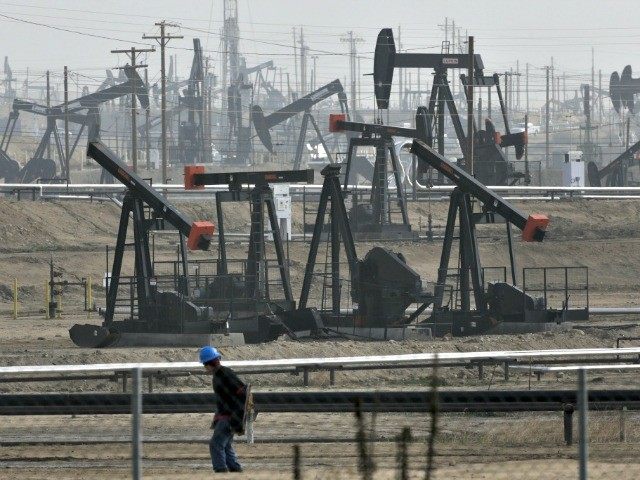A rapid 50 percent increase in the price for U.S. oil to $41 a barrel has set the stage for the second leg of the U.S. fracking boom.
Since the price for U.S. crude oil, called West Texas Intermediate (WTI), hit a 12-year low on February 11 at $26.11 a barrel, the market has rallied by over 50 percent to an intraday high of $41.90.
The March 22 recovery high came amidst the horrific Brussels terrorist attack and an 8.8-million-barrel rise in U.S. crude oil inventories, the 2nd biggest weekly build in a year, according to the American Petroleum Institute.
The driving force in the oil market has been speculation about an imminent supply freeze led by Saudi Arabia and Russia, after months of diplomatic talks. Although the two countries tentatively struck an agreement last month to withhold further production, both have continued to increase supply.
Lower prices were expected to devastate the U.S. fracking boom, which saw American production almost double to 9.3 million barrels a day. But despite the up to 75 percent decline in the WTI price and a 41 percent drop in the number of operating drilling rigs, from 1,809 to 1,069, U.S. production is virtually unchanged in the last year.
This baffling phenomenon is due to U.S. fracking producers, which now accounts for over 50 percent of U.S. production, shocking commodity markets with their ability to cut costs and improve production at wells already in operation, according to the Drilling Productivity Report.
America’s oil production since 2008 is up 80 percent, mainly due to ever-increasing efficiency. As a result, the United States overtook surpassedRussia last year as the world’s largest and fastest-growing producer of oil and natural gas, according to the U.S. Energy Information Agency.
Despite this year’s global spending in the oil sector falling 27 percent compared to last year, and 44 percent below 2014 levels, America’s improved fracking efficiency has more than made up for the price cut.
To get a sense of the future economics of fracking in the U.S., it was estimated in late 2015 by analysts at Jeffries & Co. that there is a backlog of 5,000 wells that are “Drilled, but UnCompleted” (DUC), waiting to be fracked.
EOG Resources (NYSE:EOG) stated that they intended to bring about 270 DUC wells into production in 2016. At a current crude oil price of $41 a barrel, EOG estimates that with fracking they can make a 30 percent profit. That means their break-even is $28.70 a barrel, just slightly above the February market low of $26.11.
More importantly, EOG can make an even bigger profit by selling future deliveries of crude oil barrels in the commodity markets for about $43 in July, $45 in December, and $47 in December 2015.
President Obama once stated that U.S. oil was in terminal decline:
“Oil is a finite resource… We consume more than 20 percent of the world’s oil, but have less than 2 percent of the world’s oil reserves.” He added, “For decades, we have known the days of cheap and easily accessible oil were numbered. For decades, we’ve talked and talked about the need to end America’s century-long addiction to fossil fuels. And for decades, we have failed to act with the sense of urgency that this challenge requires.”
During Obama’s time in office, the American fracking boom has cut the price of oil by 60 percent — and U.S. net imports of oil by nearly 60 percent. And te 50 percent bounce in the price of oil over the last six weeks appears to have set the stage for the sequel of the U.S. fracking boom

COMMENTS
Please let us know if you're having issues with commenting.